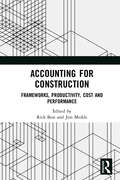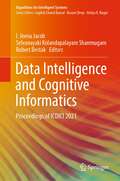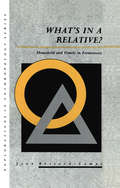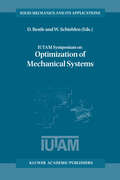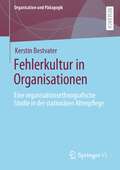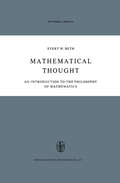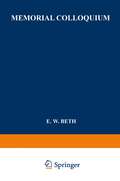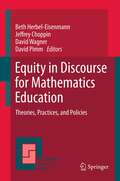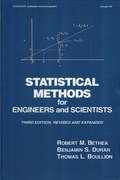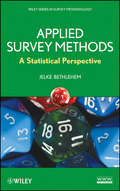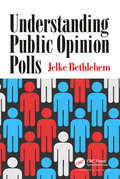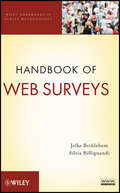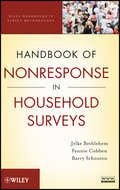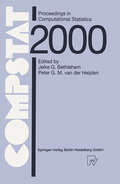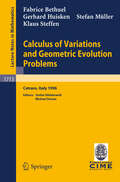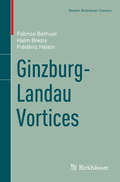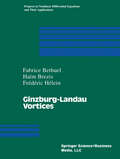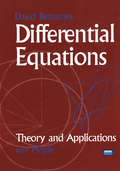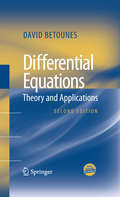- Table View
- List View
Accounting for Construction: Frameworks, Productivity, Cost and Performance
by Rick Best Jim MeikleAccounting for Construction follows on from Measuring Construction, edited by the same team. It extends the coverage of some of the material in the first volume and expands the range of related topics to include, inter alia, shadow economies, accounting for informal construction and the treatment of the built environment sector in national accounts. Taken together, the two volumes collate a range of topics that are only addressed, if addressed at all, in occasional academic papers and the publications of bodies such as national statistical offices and the World Bank. Accounting for Construction presents international examples from the UK, Australia and New Zealand and from both academic and professional contributors. This book is essential reading for all researchers and professionals interested in construction economics, construction management, and anyone interested in how the construction industry affects the global economy in ways previously under-represented in the literature.
Accounting for Construction: Frameworks, Productivity, Cost and Performance
by Rick Best Jim MeikleAccounting for Construction follows on from Measuring Construction, edited by the same team. It extends the coverage of some of the material in the first volume and expands the range of related topics to include, inter alia, shadow economies, accounting for informal construction and the treatment of the built environment sector in national accounts. Taken together, the two volumes collate a range of topics that are only addressed, if addressed at all, in occasional academic papers and the publications of bodies such as national statistical offices and the World Bank. Accounting for Construction presents international examples from the UK, Australia and New Zealand and from both academic and professional contributors. This book is essential reading for all researchers and professionals interested in construction economics, construction management, and anyone interested in how the construction industry affects the global economy in ways previously under-represented in the literature.
Data Intelligence and Cognitive Informatics: Proceedings of ICDICI 2021 (Algorithms for Intelligent Systems)
by Robert Bestak I. Jeena Jacob Selvanayaki Kolandapalayam ShanmugamThe book is a collection of peer-reviewed best selected research papers presented at the International Conference on Data Intelligence and Cognitive Informatics (ICDICI 2021), organized by SCAD College of Engineering and Technology, Tirunelveli, India, during July 16–17, 2021. This book discusses new cognitive informatics tools, algorithms, and methods that mimic the mechanisms of the human brain which leads to an impending revolution in understating a large amount of data generated by various smart applications. The book includes novel work in data intelligence domain which combines with the increasing efforts of artificial intelligence, machine learning, deep learning, and cognitive science to study and develop a deeper understanding of the information processing systems.
What's in a Relative: Household and Family in Formentera
by Joan Bestard-CampsIn this ground-breaking study based on ethnographic research in Formentera, in the Balearic Islands, the author demonstrates that European kinship can become central to anthropological explanation once it is understood from a symbolic and cultural perspective. This book is an outstanding example of ethnographic analysis which is sensitive to the findings of demographic and historical research.
What's in a Relative: Household and Family in Formentera
by Joan Bestard-CampsIn this ground-breaking study based on ethnographic research in Formentera, in the Balearic Islands, the author demonstrates that European kinship can become central to anthropological explanation once it is understood from a symbolic and cultural perspective. This book is an outstanding example of ethnographic analysis which is sensitive to the findings of demographic and historical research.
IUTAM Symposium on Optimization of Mechanical Systems: Proceedings of the IUTAM Symposium held in Stuttgart, Germany, 26–31 March 1995 (Solid Mechanics and Its Applications #43)
by D. Bestle Werner SchiehlenThe International Union of Theoretical and Applied Mechanics (IUTAM) initiated and sponsored an International Symposium on Optimization of Mechanical Systems held in 1995 in Stuttgart, Germany. The Symposium was intended to bring together scientists working in different fields of optimization to exchange ideas and to discuss new trends with special emphasis on multi body systems. A Scientific Committee was appointed by the Bureau of IUTAM with the following members: S. Arimoto (Japan) EL. Chernousko (Russia) M. Geradin (Belgium) E.J. Haug (U.S.A.) C.A.M. Soares (Portugal) N. Olhoff (Denmark) W.O. Schiehlen (Germany, Chairman) K. Schittkowski (Germany) R.S. Sharp (U.K.) W. Stadler (U.S.A.) H.-B. Zhao (China) This committee selected the participants to be invited and the papers to be presented at the Symposium. As a result of this procedure, 90 active scientific participants from 20 countries followed the invitation, and 49 papers were presented in lecture and poster sessions.
Fehlerkultur in Organisationen: Eine organisationsethnografische Studie in der stationären Altenpflege (Organisation und Pädagogik #33)
by Kerstin BestvaterIm Zentrum dieser Studie steht die Frage nach der Verflechtung der Fehlerkultur mit den Entscheidungs- und Handlungspraktiken in einer Alten- und Pflegeeinrichtung. Dafür wurde mit der pädagogischen Organisationsethnografie ein explorativer Zugang zum Forschungsgegenstand gewählt, der einen tiefen Einblick in die soziale Welt der Altenpflege gewährt. Kernstück ist eine konzeptualisierende Darstellung feldtypischer Praktiken und eine gegenstandsbezogene Theorieentwicklung, die im Sinne der Grounded Theory umgesetzt wurde. Das genuine Dilemma der Altenpflege zwischen Wirtschaftlichkeit und Pflegeethos führt zu Praxismustern, die als Problemlösungsstrategien auch die Fehlerkultur prägen.
Mathematical Thought: An Introduction to the Philosophy of Mathematics (Synthese Library #11)
by E.W. BethIn contributing a foreword to this book I am complying with a wish my husband expressed a few days before his death. He had completed the manuscript of this work, which may be considered a companion volume to his book Formal Methods. The task of seeing it through the press was undertaken by Mr. J. J. A. Mooij, acting director of the Institute for Research in Foundations and the Philosophy of Science (Instituut voor Grondslagenonderzoek en Filoso:fie der Exacte Wetenschappen) of the University of Amsterdam, with the help of Mrs. E. M. Barth, lecturer at the Institute. I wish to thank Mr. Mooij and Mrs. Barth most cordially for the care with which they have acquitted themselves of this delicate task and for the speed with which they have brought it to completion. I also wish to express my gratitude to Miss L. E. Minning, M. A. , for the helpful advice she has so kindly given to Mr. Mooij and Mrs. Barth during the proof reading. C. P. C. BETH-PASTOOR VII PREFACE A few years ago Mr. Horace S.
Memorial Colloquium: Logic and Foundations of Science Paris, Institut Henri Poincaré, 19–21 May 1964
by Beth (E.W. ) Memorial Colloquim, Institut Henri Poincaré Evert Willem Beth Jean Louis DestouchesEquity in Discourse for Mathematics Education: Theories, Practices, and Policies (Mathematics Education Library #55)
by Beth Herbel-Eisenmann, Jeffrey Choppin, David Wagner and David PimmThis book explores the connection between the ways people speak in mathematics classrooms and their opportunities to learn mathematics. The words spoken, heard, written and read in mathematics classrooms shape students’ sense of what mathematics is and of what people can do with mathematics. The authors employ multiple perspectives to consider the means for transformative action with respect to increasing opportunities for traditionally marginalized students to form mathematical identities that resonate with their cultural, social, linguistic, and political beings.
Statistical Methods for Engineers and Scientists, Third Edition,
by Robert M. BetheaThis work details the fundamentals of applied statistics and experimental design, presenting a unified approach to data handling that emphasizes the analysis of variance, regression analysis and the use of Statistical Analysis System computer programs. This edition: discusses modern nonparametric methods; contains information on statistical process control and reliability; supplies fault and event trees; furnishes numerous additional end-of-chapter problems and worked examples; and more.
Statistical Methods for Engineers and Scientists, Third Edition,
by Robert M. BetheaThis work details the fundamentals of applied statistics and experimental design, presenting a unified approach to data handling that emphasizes the analysis of variance, regression analysis and the use of Statistical Analysis System computer programs. This edition: discusses modern nonparametric methods; contains information on statistical process control and reliability; supplies fault and event trees; furnishes numerous additional end-of-chapter problems and worked examples; and more.
Applied Survey Methods: A Statistical Perspective (Wiley Series in Survey Methodology #558)
by Jelke BethlehemA complete, hands-on guide to the use of statistical methods for obtaining reliable and practical survey research Applied Survey Methods provides a comprehensive outline of the complete survey process, from design to publication. Filling a gap in the current literature, this one-of-a-kind book describes both the theory and practical applications of survey research with an emphasis on the statistical aspects of survey methods. The book begins with a brief historic overview of survey research methods followed by a discussion that details the needed first steps for carrying out a survey, including the definition of a target population, the selection of a sampling frame, and the outline of a questionnaire with several examples that include common errors to avoid in the wording of questions. Throughout the book, the author provides an accessible discussion on the methodological problems that are associated with the survey process, outlining real data and examples while also providing insight on the future of survey research. Chapter coverage explores the various aspects of the survey process and the accompanying numerical techniques, including: Simple and composite sampling designs Estimators Data collection and editing The quality of results The non-response problem Weighting adjustments and methods Disclosure control The final chapter addresses the growing popularity of Web surveys, and the associated methodological problems are discussed, including solutions to common pitfalls. Exercises are provided throughout with selected answers included at the end of the book, while a related Web site features additional solutions to exercises and a downloadable demo version of the Blaise system of computer-assisted interviewing. Access to the freely available SimSam software is also available on the related Web site and provides readers with the tools needed to simulate samples from finite populations as well as visualize the effects of sample size, non-response, and the use of different estimation procedures. Applied Survey Methods is an excellent book for courses on survey research and non-response in surveys at the upper-undergraduate and graduate levels. It is also a useful reference for practicing statisticians and survey methodologists who work in both government and private research sectors.
Understanding Public Opinion Polls
by Jelke BethlehemPolls are conducted every day all around the world for almost everything (especially during elections). But not every poll is a good one. A lot depends on the type of questions asked, how they are asked and whether the sample used is truly representative. And these are not the only aspects of a poll that should be checked. So how does one separate the chaff from the wheat? That’s where Understanding Public Opinion Polls comes in. Written by a well-known author with over thirty years of experience, the book is built around a checklist for polls that describes the various aspects of polls to pay attention to if one intends to use its results. By comprehensively answering the questions in the checklist, a good idea of the quality of the poll is obtained. Features: Provides readers with a deeper understanding of practical and theoretical aspects of opinion polls while assuming no background in mathematics or statistics Shows how to determine if a poll is good or bad Provides a historical perspective and includes examples from real polls Gives special attention to online and election polls The book gives an overview of many aspects of polls – questionnaire design, sample selection, estimation, margins of error, nonresponse and weighting. It is essential reading for those who want to gain a better understanding of the ins and outs of polling including those who are confronted with polls in their daily life or work or those who need to learn how to conduct their own polls.
Understanding Public Opinion Polls
by Jelke BethlehemPolls are conducted every day all around the world for almost everything (especially during elections). But not every poll is a good one. A lot depends on the type of questions asked, how they are asked and whether the sample used is truly representative. And these are not the only aspects of a poll that should be checked. So how does one separate the chaff from the wheat? That’s where Understanding Public Opinion Polls comes in. Written by a well-known author with over thirty years of experience, the book is built around a checklist for polls that describes the various aspects of polls to pay attention to if one intends to use its results. By comprehensively answering the questions in the checklist, a good idea of the quality of the poll is obtained. Features: Provides readers with a deeper understanding of practical and theoretical aspects of opinion polls while assuming no background in mathematics or statistics Shows how to determine if a poll is good or bad Provides a historical perspective and includes examples from real polls Gives special attention to online and election polls The book gives an overview of many aspects of polls – questionnaire design, sample selection, estimation, margins of error, nonresponse and weighting. It is essential reading for those who want to gain a better understanding of the ins and outs of polling including those who are confronted with polls in their daily life or work or those who need to learn how to conduct their own polls.
Handbook of Web Surveys (Wiley Handbooks in Survey Methodology #567)
by Jelke Bethlehem Silvia BiffignandiBEST PRACTICES TO CREATE AND IMPLEMENTHIGHLY EFFECTIVE WEB SURVEYS Exclusively combining design and sampling issues, Handbook of Web Surveys presents a theoretical yet practical approach to creating and conducting web surveys. From the history of web surveys to various modes of data collection to tips for detecting error, this book thoroughly introduces readers to the this cutting-edge technique and offers tips for creating successful web surveys. The authors provide a history of web surveys and go on to explore the advantages and disadvantages of this mode of data collection. Common challenges involving under-coverage, self-selection, and measurement errors are discussed as well as topics including: Sampling designs and estimation procedures Comparing web surveys to face-to-face, telephone, and mail surveys Errors in web surveys Mixed-mode surveys Weighting techniques including post-stratification, generalized regression estimation, and raking ratio estimation Use of propensity scores to correct bias Web panels Real-world examples illustrate the discussed concepts, methods, and techniques, with related data freely available on the book's Website. Handbook of Web Surveys is an essential reference for researchers in the fields of government, business, economics, and the social sciences who utilize technology to gather, analyze, and draw results from data. It is also a suitable supplement for survey methods courses at the upper-undergraduate and graduate levels.
Handbook of Web Surveys (Wiley Handbooks in Survey Methodology #567)
by Jelke Bethlehem Silvia BiffignandiBEST PRACTICES TO CREATE AND IMPLEMENTHIGHLY EFFECTIVE WEB SURVEYS Exclusively combining design and sampling issues, Handbook of Web Surveys presents a theoretical yet practical approach to creating and conducting web surveys. From the history of web surveys to various modes of data collection to tips for detecting error, this book thoroughly introduces readers to the this cutting-edge technique and offers tips for creating successful web surveys. The authors provide a history of web surveys and go on to explore the advantages and disadvantages of this mode of data collection. Common challenges involving under-coverage, self-selection, and measurement errors are discussed as well as topics including: Sampling designs and estimation procedures Comparing web surveys to face-to-face, telephone, and mail surveys Errors in web surveys Mixed-mode surveys Weighting techniques including post-stratification, generalized regression estimation, and raking ratio estimation Use of propensity scores to correct bias Web panels Real-world examples illustrate the discussed concepts, methods, and techniques, with related data freely available on the book's Website. Handbook of Web Surveys is an essential reference for researchers in the fields of government, business, economics, and the social sciences who utilize technology to gather, analyze, and draw results from data. It is also a suitable supplement for survey methods courses at the upper-undergraduate and graduate levels.
Handbook of Nonresponse in Household Surveys (Wiley Handbooks in Survey Methodology #568)
by Jelke Bethlehem Fannie Cobben Barry SchoutenA comprehensive, one-stop guide to identifying, reducing, and managing nonresponse in household surveys Nonresponse and its impact on the sample selection mechanism of a survey is a common problem that often arises while collecting survey data. Handbook of Nonresponse in Household Surveys is a complete guide to handling the nonresponse problem, outlining statistical methods and techniques for improving response rates and correcting response data. The authors begin with an introduction to the nonresponse problem along with basic concepts and definitions. Subsequent chapters present current theories and methods that enable survey researchers to skillfully account for nonresponse in their research. Exploring the latest developments in the field, the book also features: An introduction to the R-indicator as an indicator of survey quality Discussion of the different causes of nonresponse Extensive treatment of the selection and use of auxiliary information Best practices for re-approaching nonrespondents An overview of advanced nonresponse correction techniques Coverage of adaptive survey design Throughout the book, the treatment of each topic is presented in a uniform fashion. Following an introduction, each chapter presents the key theories and formulas underlying the topic and then illustrates common applications. Discussion concludes with a summary of the main concepts as well as a glossary of key terms and a set of exercises that allows readers to test their comprehension of the presented material. Examples using real survey data are provided, and a related website features additional data sets, which can be easily analyzed using Stata® or SPSS® software. Handbook of Nonresponse in Household Surveys is an essential reference for survey researchers working in the fields of business, economics, government, and the social sciences who gather, analyze, and draw results from data. It is also a suitable supplement for courses on survey methods at the upper-undergraduate and graduate levels.
Handbook of Nonresponse in Household Surveys (Wiley Handbooks in Survey Methodology #562)
by Jelke Bethlehem Fannie Cobben Barry SchoutenA comprehensive, one-stop guide to identifying, reducing, and managing nonresponse in household surveys Nonresponse and its impact on the sample selection mechanism of a survey is a common problem that often arises while collecting survey data. Handbook of Nonresponse in Household Surveys is a complete guide to handling the nonresponse problem, outlining statistical methods and techniques for improving response rates and correcting response data. The authors begin with an introduction to the nonresponse problem along with basic concepts and definitions. Subsequent chapters present current theories and methods that enable survey researchers to skillfully account for nonresponse in their research. Exploring the latest developments in the field, the book also features: An introduction to the R-indicator as an indicator of survey quality Discussion of the different causes of nonresponse Extensive treatment of the selection and use of auxiliary information Best practices for re-approaching nonrespondents An overview of advanced nonresponse correction techniques Coverage of adaptive survey design Throughout the book, the treatment of each topic is presented in a uniform fashion. Following an introduction, each chapter presents the key theories and formulas underlying the topic and then illustrates common applications. Discussion concludes with a summary of the main concepts as well as a glossary of key terms and a set of exercises that allows readers to test their comprehension of the presented material. Examples using real survey data are provided, and a related website features additional data sets, which can be easily analyzed using Stata® or SPSS® software. Handbook of Nonresponse in Household Surveys is an essential reference for survey researchers working in the fields of business, economics, government, and the social sciences who gather, analyze, and draw results from data. It is also a suitable supplement for courses on survey methods at the upper-undergraduate and graduate levels.
COMPSTAT: Proceedings in Computational Statistics 14th Symposium held in Utrecht, The Netherlands, 2000
by Jelke G. Bethlehem Peter G. M. Van Der HeijdenThis Volume contains the Keynote, Invited and Full Contributed papers presented at COMPSTAT 2000. A companion volume (Jansen & Bethlehem, 2000) contains papers describing the Short Communications and Posters. COMPST AT is a one week conference held every two years under the auspices of the International Association of Statistical Computing, a section of the International Statistical Institute. COMPST AT 2000 is jointly organised by the Department of Methodology and Statistics of the Faculty of Social Sciences of Utrecht University, and Statistics Netherlands. It is taking place from 21-25 August 2000 at Utrecht University. Previous COMPSTATs (from 1974-1998) were in Vienna, Berlin, Leiden, Edinburgh, Toulouse, Prague, Rome, Copenhagen, Dubrovnik, Neuchatel, Vienna, Barcelona and Bristol. The conference is the main European forum for developments at the interface between statistics and computing. This was encapsulated as follows on the COMPST A T 2000 homepage http://neon. vb.cbs.nlIrsml compstat. Statistical computing provides the link between statistical theory and applied statistics. As at previous COMPSTATs, the scientific programme will range over all aspects of this link, from the development and implementation of new statistical ideas through to user experiences and software evaluation. The programme should appeal to anyone working in statistics and using computers, whether in universities, industrial companies, research institutes or as software developers. At COMPST AT 2000 there is a special interest in the interplay with official statistics. This is evident from papers in the area of computerised data collection, survey methodology, treatment of missing data, and the like.
Calculus of Variations and Geometric Evolution Problems: Lectures given at the 2nd Session of the Centro Internazionale Matematico Estivo (C.I.M.E.)held in Cetaro, Italy, June 15-22, 1996 (Lecture Notes in Mathematics #1713)
by F. Bethuel G. Huisken S. Mueller K. SteffenThe international summer school on Calculus of Variations and Geometric Evolution Problems was held at Cetraro, Italy, 1996. The contributions to this volume reflect quite closely the lectures given at Cetraro which have provided an image of a fairly broad field in analysis where in recent years we have seen many important contributions. Among the topics treated in the courses were variational methods for Ginzburg-Landau equations, variational models for microstructure and phase transitions, a variational treatment of the Plateau problem for surfaces of prescribed mean curvature in Riemannian manifolds - both from the classical point of view and in the setting of geometric measure theory.
Ginzburg-Landau Vortices (Modern Birkhäuser Classics)
by Fabrice Bethuel Haïm Brezis Frédéric HéleinThis book is concerned with the study in two dimensions of stationary solutions of uɛ of a complex valued Ginzburg-Landau equation involving a small parameter ɛ. Such problems are related to questions occurring in physics, e.g., phase transition phenomena in superconductors and superfluids. The parameter ɛ has a dimension of a length which is usually small. Thus, it is of great interest to study the asymptotics as ɛ tends to zero. One of the main results asserts that the limit u-star of minimizers uɛ exists. Moreover, u-star is smooth except at a finite number of points called defects or vortices in physics. The number of these defects is exactly the Brouwer degree – or winding number – of the boundary condition. Each singularity has degree one – or as physicists would say, vortices are quantized. The material presented in this book covers mostly original results by the authors. It assumes a moderate knowledge of nonlinear functional analysis, partial differential equations, and complex functions. This book is designed for researchers and graduate students alike, and can be used as a one-semester text. The present softcover reprint is designed to make this classic text available to a wider audience.
Ginzburg-Landau Vortices (Progress in Nonlinear Differential Equations and Their Applications #13)
by Fabrice Bethuel Haim Brezis Frederic HeleinDifferential Equations: with Maple®
by David BetounesThis book provides a comprehensive introduction to the theory of ordinary differential equations with a focus on mechanics and dynamical systems as important applications of the theory. The text is written to be used in the traditional way or in a more applied way. The accompanying CD contains Maple worksheets for the exercises, and special Maple code for performing various tasks. In addition to its use in a traditional one or two semester graduate course in mathematics, the book is organized to be used for interdisciplinary courses in applied mathematics, physics, and engineering.
Differential Equations: Theory and Applications
by David BetounesThis book provides a comprehensive introduction to the theory of ordinary differential equations with a focus on mechanics and dynamical systems as important applications of the theory. The text is written to be used in the traditional way or in a more applied way. In addition to its use in a traditional one or two semester graduate course in mathematics, the book is organized to be used for interdisciplinary courses in applied mathematics, physics, and engineering.
